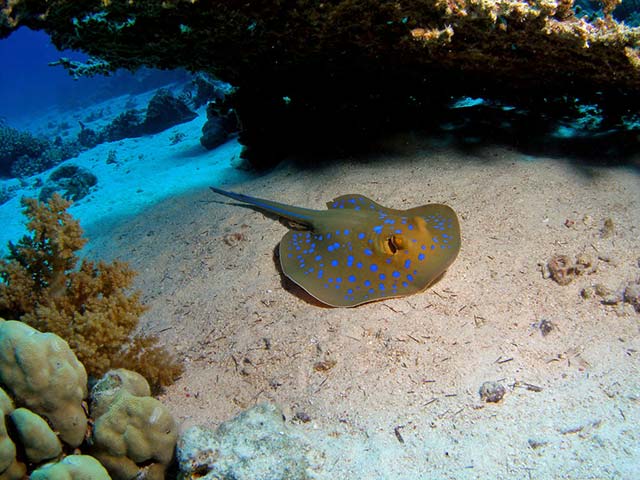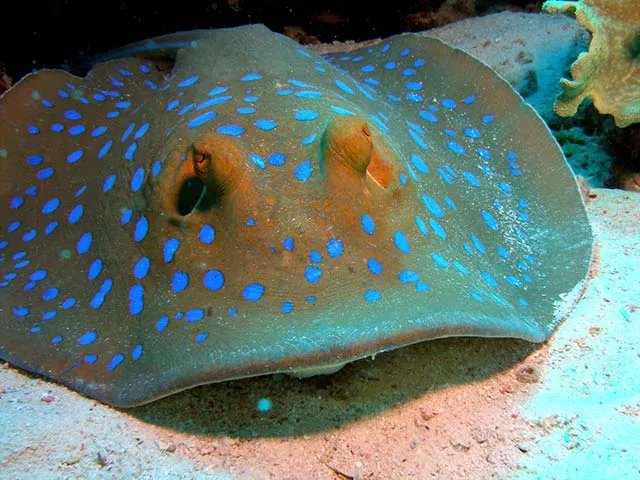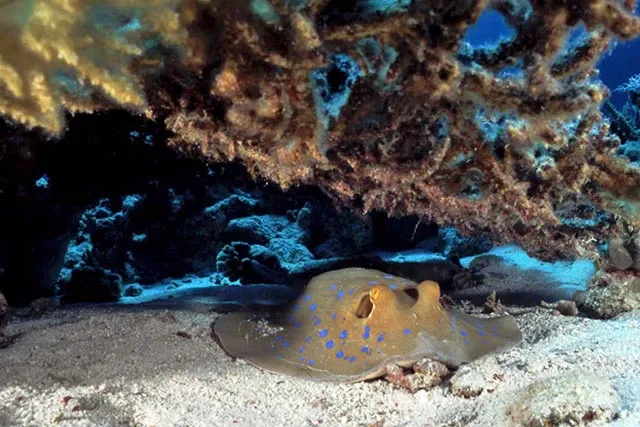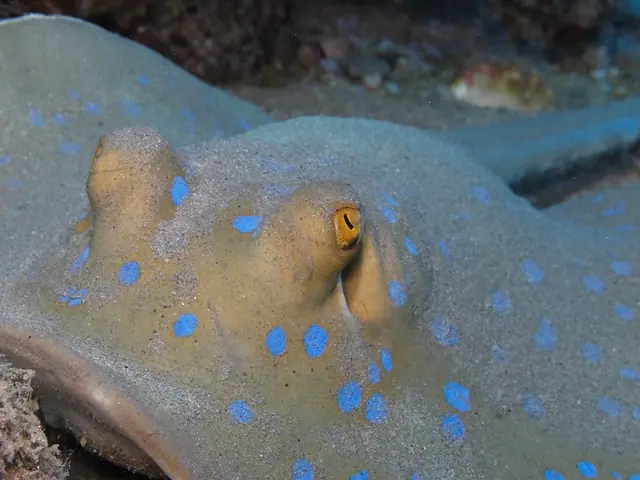

Often seen by divers in the Indian and Pacific Oceans, the bright blue spots of this stingray mark it out.

Blue spotted stingray. Photo credit: Tim Nicholson
These rays are not aggressive towards divers, but if you should accidentally step on one the spine may be driven into your leg. This causes intense pain, increasing for around 90 minutes and lasting, if untreated, for one to two days. In this case don't rub the wound - this will make things worse. Immersing in hot water may relieve the pain. Seek medical advice. The venomous spines of the ray are at the end of the tail.

Also known bluespotted ribbonray…. Photo credit: Tim Nicholson
You find this ray on sandy bottom around coral reefs, down to 50 m. They like to lie on the bottom and flick sand over themselves to hide, making it easier for them to prey on molluscs and crabs.

…or the bluespotted fantail ray. Photo credit: Tim Nicholson
They breathe by drawing water through a behind the eye (called a spiracle) and expelling it through gill slits on their undersides. This helps them breathe whilst lying on the sand.
Blue spotted stingrays give birth to a live litter of up to seven pups. The mother's unborn young are sustained first by a yolk sac and then by uterine "milk". The gestation period varies between individuals and seems to vary greatly, with pregnancies lasting between 4 and 7 months being reported by aquaria. The baby rays are mini versions of their parents, with the striking blue spots
For such a commonly seen ray, much about them remains unknown. For instance, nobody knows how long they live (but the lifespan of similar species is around 10 years).

Photo credit: Garry Frazer
Rays are able to detect electrical impulses made by other underwater creatures, which helps them catch prey. They do this using thousands of electrosensitive units known as the ampullae of Lorenzini, and female blue spotted stingrays have more of these than males. Scientists think that as well as prey detection, this difference might also help females to identify other blue spotted stingrays, distinguishing between a potential mate and an approaching predator.

Kingodm: Animalia > Phylum: Chordata > Class: Chondrichthyes > Order: Myliobatiformes > Family: Dasyatidae > Genus: Taeniura > Species: Taeniura lymma
The Elasmobranch Husbandry Manual II: Recent Advances in the Care of Sharks, Rays and their Relatives, pages 325-330.
Kempster et al, Sexual Dimorphism of the Electrosensory System: A Quantitative Analysis of Nerve Axons in the Dorsal Anterior Lateral Line Nerve of the Blue-Spotted Fantail Stingray (Taeniura lymma). Brain Behav Evol 2013;81:226Ė235 DOI: 10.1159/000351700
6 Things you didnít know about Blue Spotted Stingrays. Jill Studholme, SCUBA News
Read more Creatures of the Month.